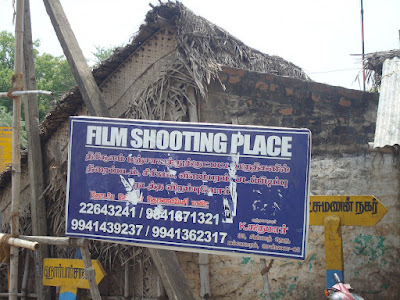Hall of lights
The place where this building stands has been in use as a prayer hall or more specifically, an Assembly Hall for Shi'a muslims to gather for prayers during the month of Muharram, for over two hundred years now. The first structure in the wedge between Peters Road and Mount Road was constructed by Nawab Umdat-ul-Umrah, the Nawab of Walajah. The date of its construction is vague, with some accounts putting it as between 1795 and 1801, others dating it to 1810 and yet others contending that it does not appear in any map of Madras until 1816. But they all agree that the Assembly Hall was a grand structure, large enough to need more than a thousand oil-lamps to light it up.
More buildings were added later, the first being a proper mosque for the faithful; if I'm correct, that was a flat-topped structure, with a couple of minarets on the sides. The domes and minarets in the photo were added much later, sometime in the 1970s and show a strong west Asian influence.
Though named Majeed Dowlah in its first appearance on a map of Madras (in 1816), the unique feature of its assembly hall gave it the name it is known by today - the Thousand Lights Mosque. Indeed there are many who believe that it is not the mosque that gave this area of Chennai the name 'Thousand Lights'; they belive that the locality was always called Thousand Lights and the mosque is called so only for fixing its location easily!








































